Milkweeds and I have reconciled since the old days.
Once upon a time, I and other farm kids had a hate-hate relationship with the common milkweed. After leaving the farm and learning some biology, that developed into a love-hate affair as some of the better aspects of this plant began to evidence themselves, but the old grudge still simmered. Today I feel I have recovered fully and can now appreciate this amazing native for the gem it truly is, especially in our yard.
You see, the common milkweed, or Asclepias syriaca, is a hardy plant, easy to establish and hard to eliminate, but eliminate it is what we tried to do on the farm. It loved to grow in our soybean fields, back in the days when we hand-weeded the beans as a summer ritual. (You can read about that here.) You could chop out volunteer corn and hoe out thistles, but milkweed you had to pull and it was no wimp. Sometimes it felt like it pulled back.
But those are bygone times now, lingering resentments have burned themselves out, and there’s no denying that milkweeds are friends with benefits. Milkweed attracts all kinds of insect pollinators, including various bees, butterflies, moths, beetles, wasps, true bugs, weevils, and more, but it is probably best known for being the nursery and food of choice for Monarch butterfly caterpillars.
One summer several years ago our milkweeds hosted so many Monarch caterpillars that they literally stripped the plants down to their chassis, and as they did so, Nadia and I would hand-carry the larvae to other, fresher plants. We noted well over thirty caterpillars that year, but have no way of knowing how many made it into the air.
The common milkweed is found pretty much everywhere in North America east of the Rocky Mts., except for the driest plains, which we may be on our way to joining considering recent weather trends. Having said that, at the time of writing this we have had a couple weeks of seriously hot and dry days, and the milkweeds are still standing tall. They have bloomed and are forming pods, while many other natives around them are drooping. Even our pin oak looks dispirited.
The common milkweed is described by the Missouri Dept. of Conservation as “a sturdy, upright plant with broad leaves, milky sap, and clusters of pink or lilac flowers. Blooms May through August. Flowers are pink to lilac, very fragrant, borne in clusters terminally
and along the stems, arising from leaf axils. Leaves are broadly elliptical, rounded at base, to 6 inches long, with fine hairs underneath, on distinct leaf stalks. Fruit are large seedpods (follicles), elongated and covered with slender projects. When dry, these split to release hundreds of seeds, each attached to a “parachute” of white, silky, flossy hairs that can carry them on the wind.” It can grow up to six or more feet high and can form thick colonies in the wild (and in beanfields, usually causing a flurry of profanity upon encountering them).
Growing milkweed is a snap—just give it lots of sun and well drained soil, even poor soil, and it will pretty much take care of the rest. It can be grown easily from seed, but will also propagate from rhizomes. Take a little care where you put it, because it’s not known as a weed for nothing. It will spread. Also, remember its attraction for bees and wasps. We have a few plants around our mailbox and one day the mail lady pulled up in her van while I was there, handed me the mail and mentioned the abundance of bees. She looked a little nervous.
Bugs seem to like it for two reasons: the bitter milky sap (hence “milkweed”) seems to be rich in sucrose, while the toxic glycosides can concentrate in the organism consuming them, making them in turn toxic to potential predators. Every child learns that Monarch butterflies advertise their yuckiness with bright and distinctive colors, a strategy known as “aposematism” to let predators know that eating them is not a good idea.
But the plant itself can exact a price for its generosity. Consider this bee, happily feeding on the milkweed flowers:
The milkweed has a strategy for using its fans to pollinate other milkweeds. “Pollinia” are compact masses of pollen and the milkweed hides them inside its flowers, reachable through a slit-like opening. When an insect lands on the flower, its legs will often penetrate the slit and become entangled with the pollinia, which will hopefully be extracted and transferred to another milkweed. Often, however, the insect is unable to escape and meets its doom (like the bee above) dangling from the flower it had hoped to raid.
A. syriaca’s benefits do not stop at pleasing pollinators, but include uses as food, fiber, and medicines for us humans. The young shoots and leaves, flower buds and pods are all edible raw. In fact, I photographed a small, green pod just the other day, then munched it down—-it had no bitterness at all, just a nice mild veggie taste that would also be great simply steamed or stir-fried and dressed with olive oil, salt and pepper.
Be aware that there is a bit of controversy about the toxicity of this plant, stemming in part from the work of that master of natural cuisine, Euell Gibbons, although I have never heard of anyone getting sick from eating the young parts. Besides, who except insects and caterpillars would really want to eat the older bitter parts that hold the toxins? Potential effects are said to include dullness, weakness, bloating, and inability to stand or walk, but while I’ve been to Fourth of July celebrations that have produced similar symptoms, effects may continue on to fever, difficulty breathing, dilated pupils, spasms, and coma. So, caution is the word with this and any other food from nature.
Cordage is another old and common use for this plant : “Milkweeds supply tough fibers for making cords and ropes, and for weaving a coarse cloth. Milkweed stems are collected after the stalks senesce in late fall-early winter. The dried stalks are split open to release the fibers; milkweed fibers are sometimes mixed with fibers of Indian hemp (Apocynum cannabinum). The bark is removed and the fibers released by first rubbing between the hands and then drawing the fibers over a hard surface. Twisting the fiber opposite each other and twining them together forms the cord. Often this is accomplished by rolling the fibers on the thigh while twisting them together.”
Medicinally, the milkweed seems to be veritable cornucopia of remedies for everything from back-aches and ring-worms to bee stings and constipation. (The genus Asclepias is named for the Greek god of healing, who, like most Greek gods, seemed to enjoy spelling his name about twenty different ways.) Some Native Americans apparently even used it as a contraceptive , but you’re on your own there. Let us know how it works out for you.
For our yard, though, milkweed mainly serves as an attractive and hardy nursery for Monarchs and an excellent source of nectar and food for other pollinators. It is another native that gives a lot and asks for next to nothing. We highly recommend it as an addition to any native plant landscape.
Oh—about that epithet “syriaca”. Carl Linneaeus, originator of our taxonomic system, apparently thought that the type specimen for the common milkweed had come from the Orient instead of North America when he named it back in the 18th century. Whether or not he was suffering from “dullness” as a result of eating the wrong parts of the plant is not recorded in history, but we’re stuck with the name now. Best get used to it.
Note: Here are a couple other articles on plants that attract pollinators, courtesy of Nadia!
Native Plants for Pollinators and Other Beneficial Insects
Ten Native Plants for Native Pollinators and Honey Bees

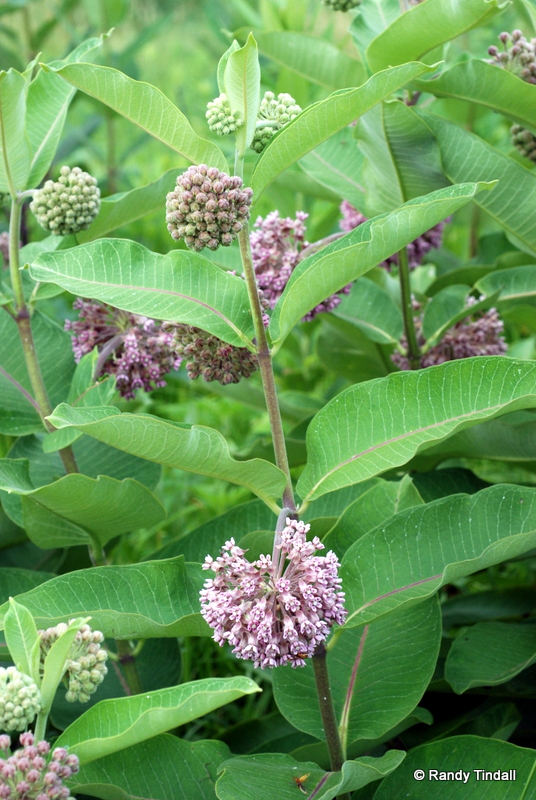


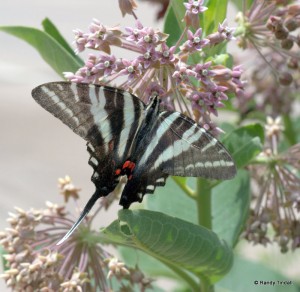
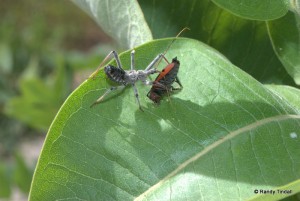
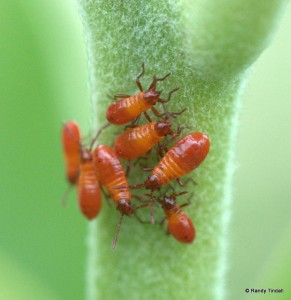
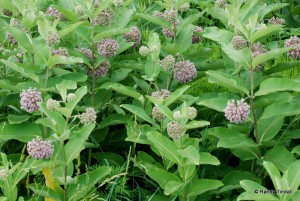
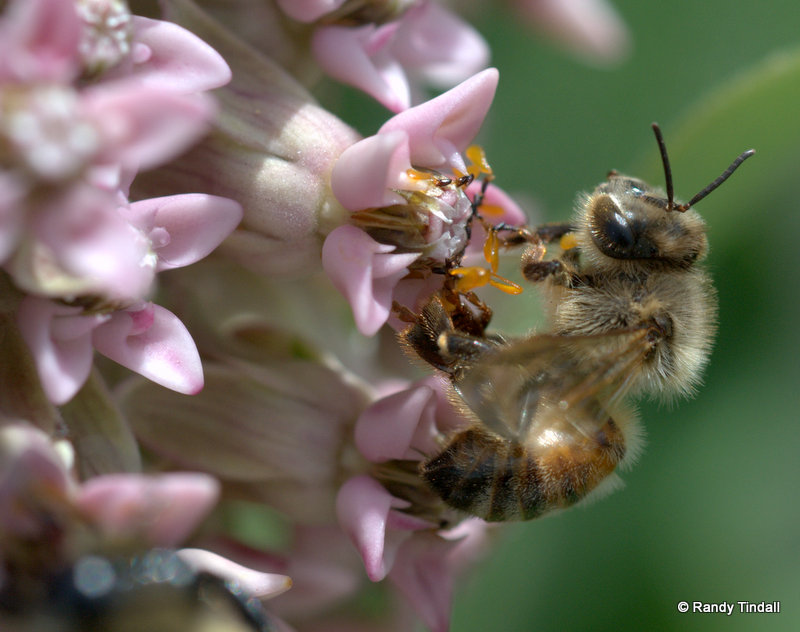
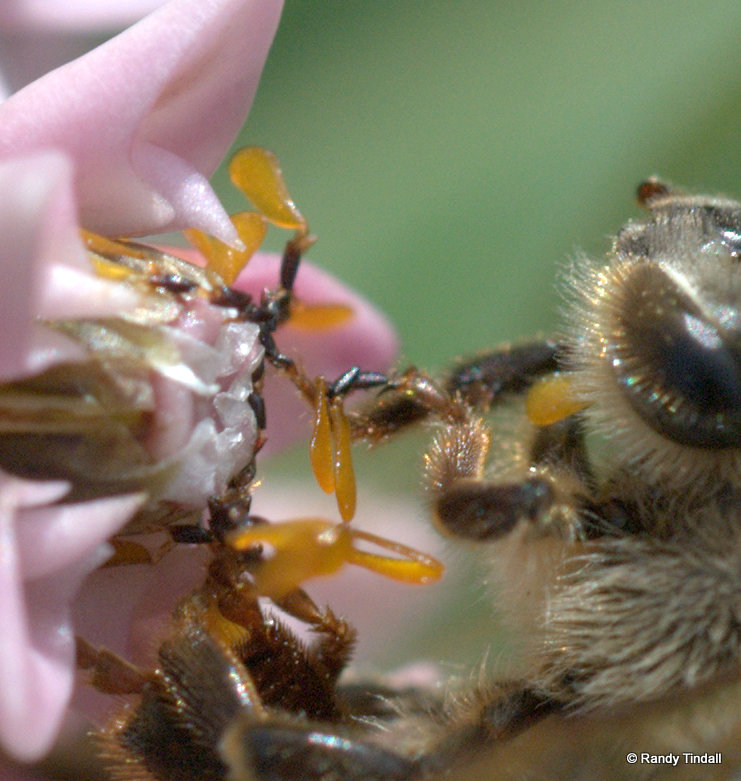
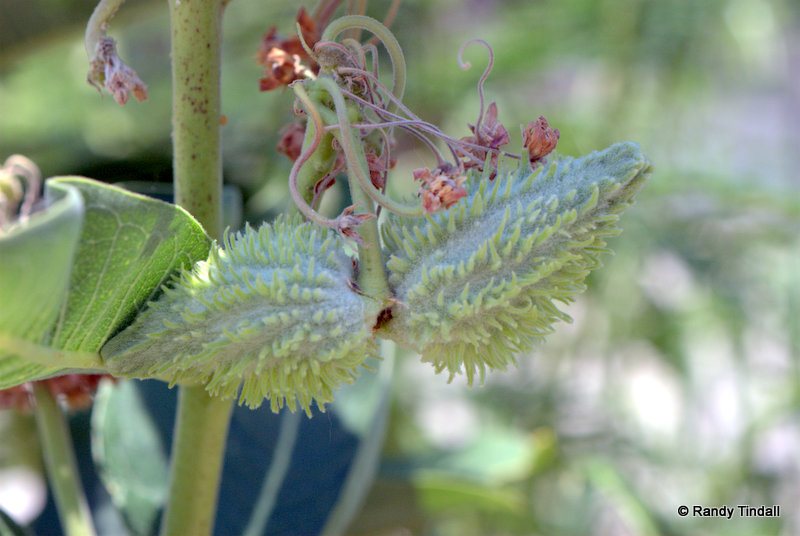
Randy,
Beautiful images! I love your blog and your combination of EM and nature! I am currently working on native plants in watercolor. After my move to Madison I find an endless supply of inspiration in the oak savanna prairie. Keep up the good work!
Fellow electron microscopist,
Janice G. Pennington
Thanks, Janice! I’ll pass on the compliment to Nadia. BTW, I am now back at the EM Core at UM. No escape for me. Good to hear from you.
just ran into your site this morning (Halloween 2012) looking at the info on pokeweed- well, one plant followed another and my day has been enjoyable because of the humorous and earthy things I’ve read here. Love your witt. Liked the one thing you said about the imperfections and as we realise about our own the more we tolerate it in others- persons and nature.
Thanks, Andi! I appreciate your comments and I’m glad you enjoyed yourself.
As usual, Randy, exquisitely edutaining (educational and entertaining). I am reading to find out what is growing around my new Missouri home. You have a delightful style, both in writing and photography.
Thanks, Dawn! Now—plant some milkweeds!
Very helpful to my school research thank you
I’m happy it was useful. Thank you for reading.
Hi Randy,
The monarchs finally found the swamp milkweed in our backyard, and the kids brought in caterpillar after caterpillar all summer long. The kids took stem cuttings from the milkweed, and the caterpillars happily munched away in the safety and security of our family room inside their 12x12x12 inch enclosure. However, one enclosure quickly became two, then three, but the kids had fun (and so did I).
I was thinking of possibly planting some common milkweed next year, and had a couple of questions for you. I read that the bloom time for common milkweed is May through August. Now I know that a single plant won’t bloom for four months, but my sister said that the common milkweed that grows by her blooms for about three weeks, maybe a month. She also said that almost every plant started to bloom around mid June (we live in Michigan), and were finished blooming by mid July. I know your bloom time is probably a little earlier than ours, but does your common milkweed bloom for three to four weeks, or do you have blooms throughout the summer?
Once common milkweed has flowered and started to form seed pods, I have heard that common milkweed starts to go into decline, and can look a little rough around the edges. Now if it does its job, and the caterpillars eat it to the ground I guess its late season appearance isn’t that important. However, I heard that as growing season progresses, the female monarchs look for milkweed with more tender leaves, so the late season caterpillars are typically not found on common milkweed? I guess my question is, how does your common milkweed look at year end?
Thanks
Missouri Wildflowers by Edgar Denison states the blooming period as May-August, which sounds about right to me. I actually never noted the beginning and ending blooming dates for the group of milkweeds in our yard, but I seem to see the blossoms pretty much all summer long. Regarding the appearance of the plants after blooming is done, they can get pretty scraggly looking, especially when they get aphid infestations, as ours often do. We are trying to move them back away from the street and into our fenced-in backyard where appearance isn’t so important, but they still like to come back where they have been before.
That said, I strongly encourage you to plant them, both for the monarchs and because pollinators of many types love those flowers. Also, the young tender pods are edible and tasty, sauteed in a little butter, salt and pepper. I actually munched one raw right off the plant one time and liked it. Good luck!
I loved this post! I miss my Milkweeds in Maine! This spring, at our new house in the SW Ozarks, we got two – no three – varieties of Milkweed from different Missouri nurseries and NONE of them flowered. I was so disappointed. And they didn’t grow nearly as well as the ones that couldn’t be *stopped* from growing tall and sturdy in crappy soil out along the roads in Maine. So I’ll be shopping for Milkweed again this next spring.
Our milkweeds are very persistent and healthy. Our wonderful neighbor to the north has even allowed a few spreaders to remain in her otherwise pristine yard. She wants to help out the monarchs. My only complaint about these milkweeds is that they get pretty awful looking as the fall progresses, so we tend to cut them down after we stop seeing critters using them. So far this year we and a neighbor have gotten and released well over 100 monarchs from our patch! Keep trying!
Great article. I have the same love/hate relationship you described when removing the milkweed from rows and rows of soybeans. I remember being told as a child while walking beans that the milkweed plant (or perhaps just the sap from the plant) was poisonous. So, even when not pulling the plant from soybean fields, I have largely left it alone. That is until recently when I committed the ultimate soybean farmers sin and actually planted and helped to cultivate a few of these plants. I hope the insects will enjoy them.
Sweet sweet irony, you are not lost on me….
Great minds thing alike, Top.
You have achieved wisdom, Grasshopper.
does this attract fleas, mosquitoes or ticks? also, could it cause allergies for my dogs & I or any problems? they’re giving away seeds here in TN & we must have some in our field, i’ve actually had a wild beautiful monarch butterfly land at my door before very uncommon around here. anyways, i can plant them away from our house if they do but i think i also have a few wild ones in my garden which im horrible at gardening anyways lol but any help would be appreciated! thanks
Milkweeds don’t attract fleas, mosquitoes, or ticks, but those things can be found anywhere there is abundant vegetation. They DO attract lots of desirable insects, especially butterflies and both native and honey bees. I’m not aware of any allergies connected with milkweeds. I’m sure some people are allergic to them, but I’ve never heard of it being a problem for people or dogs. They are very desirable plants for anyone wanting to increase the numbers of pollinators around their property, and that is good for wildlife in general. We have many in our front yard here in town. We’re keeping ’em!